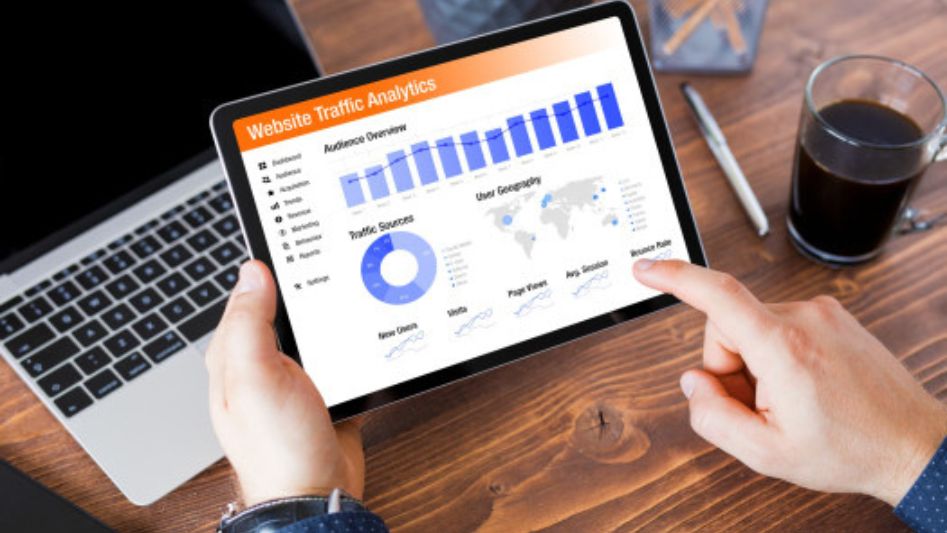Welcome to the ultimate guide to unlocking organic traffic! In today’s digital age, search engine optimization (SEO) has become crucial for businesses and individuals aiming to enhance their online presence. This guide will walk you through the essential strategies, techniques, and best practices to help you succeed in SEO and attract organic traffic to your website. So, let’s dive in and unravel the secrets of SEO success!
Table of Contents:
We invite you to read: “The Future of SEO: Trends to Watch in 2023 and Beyond”

The Importance of Organic Traffic
Before we delve into the intricacies of SEO, it’s crucial to understand the significance of organic traffic. Organic traffic refers to the visitors who land on your website through unpaid search engine results. It is the lifeblood of online businesses, providing targeted and relevant visitors who are more likely to convert into customers. By optimizing your website for search engines, you can attract high-quality organic traffic, leading to increased visibility, brand recognition, and ultimately, business growth.
Keyword Research: The Foundation of SEO
One of the fundamental aspects of SEO is keyword research. Keywords are the words and phrases people use when searching for information, products, or services online. By identifying and targeting the right keywords, you can align your website’s content with user intent and improve your search engine rankings.
To conduct effective keyword research, consider the following steps:
- Brainstorming: Start by brainstorming potential keywords related to your industry, products, or services. Think about the terms your target audience is likely to search for.
- Keyword Research Tools: Utilize powerful keyword research tools like Google Keyword Planner, SEMrush, or Moz Keyword Explorer to discover relevant keywords. These tools provide valuable insights into search volume, competition, and related terms.
- Long-Tail Keywords: While competitive keywords are essential, don’t overlook long-tail keywords. These longer and more specific phrases may have lower search volume but often yield higher conversion rates.
- Competitor Analysis: Analyze your competitors’ websites to identify keywords they are targeting successfully. This can give you valuable ideas and help you discover new keyword opportunities.
Remember, effective keyword research forms the foundation of your SEO strategy. By targeting the right keywords, you can unlock organic traffic potential and outrank your competitors in search engine results.
On-Page Optimization: Enhancing Your Website’s Visibility
Once you have identified the target keywords, it’s time to optimize your website’s on-page elements to improve its visibility to search engines and users. On-page optimization involves optimizing various aspects of your web pages, including:
1. Title Tags: The First Impression
Title tags play a crucial role in SEO. They are HTML elements that define the title of a web page and appear as clickable headlines in search engine results. To optimize your title tags:
- Include your target keyword naturally within the title tag.
- Keep the title concise, compelling, and within the recommended character limit (typically around 50-60 characters).
- Make the title tag unique for each page of your website.
2. Meta Descriptions: The Art of Persuasion
Meta descriptions provide a brief summary of a web page’s content. While they don’t directly influence rankings, well-crafted meta descriptions can entice users to click on your website. To optimize your meta descriptions:
- Include relevant keywords to catch the user’s attention.
- Craft compelling and concise descriptions within the recommended length (around 150-160 characters).
- Highlight the unique value proposition of your content.
3. Headers: Structuring Your Content
Headers (H1, H2, H3, etc.) help structure your content and provide hierarchy. They make your content easier to read and understand for both users and search engines. To optimize your headers:
- Include relevant keywords in your H1 tag to indicate the primary topic of the page.
- Use H2 and H3 tags for subheadings to organize your content logically.
- Ensure your headers accurately reflect the content they precede.
4. URL Structure: Simplicity and Relevance
A clean and logical URL structure enhances user experience and assists search engines in understanding your content. Consider the following tips for optimizing your URLs:
- Keep URLs concise, descriptive, and relevant to the page’s content.
- Use hyphens to separate words, rather than underscores or other characters.
- Avoid including unnecessary parameters or numbers in your URLs.
5. Keyword Optimization: Balancing Act
Strategically placing your target keywords within your content is essential for SEO. However, it’s crucial to maintain a natural and user-friendly flow. Here are some best practices for keyword optimization:
- Incorporate keywords in the page’s headline, introductory paragraph, and subheadings.
- Sprinkle keywords naturally throughout the content, ensuring readability and coherence.
- Avoid keyword stuffing, which can harm your rankings and user experience.
By optimizing these on-page elements, you can enhance your website’s visibility in search engine results and attract more organic traffic. Remember to strike a balance between SEO optimization and creating valuable content for your users.
We invite you to read: “The Importance of SEO in Online Marketing”

Off-Page Optimization: Building Authority and Trust
While on-page optimization focuses on optimizing your website’s elements, off-page optimization involves strategies to build authority and trust from external sources. Off-page optimization techniques help search engines evaluate the quality and relevance of your website. Here are some crucial off-page optimization strategies:
1. Link Building: The Power of Backlinks
Backlinks, also known as inbound links, are links from other websites that point to your site. Search engines consider backlinks as votes of confidence, indicating that your content is valuable and authoritative. To build quality backlinks:
- Create high-quality, shareable content that naturally attracts links.
- Reach out to influencers, bloggers, or websites in your industry to request backlinks.
- Participate in guest blogging opportunities to secure backlinks from relevant websites.
2. Social Media Engagement: Amplify Your Reach
Social media platforms offer an excellent opportunity to engage with your target audience and amplify your content’s reach. By actively participating in social media, you can:
- Share your content on social media platforms to attract engagement and potential backlinks.
- Encourage social sharing through social media buttons on your website.
- Interact with your audience, respond to comments, and build relationships.
3. Online Directories and Listings: Establishing Credibility
Listing your website on reputable online directories and listings can boost your website’s visibility and credibility. Ensure that your business information is consistent across different directories, including:
- Google My Business
- Yelp
- Yellow Pages
- Industry-specific directories
By implementing these off-page optimization techniques, you can strengthen your website’s authority and reputation, further enhancing its search engine rankings and attracting organic traffic.
We invite you to read: “Role of SEO in Digital Marketing: A Beginners Guide”

Conclusion
Congratulations! You’ve now unlocked the ultimate guide to SEO success and organic traffic generation. By implementing the strategies, techniques, and best practices outlined in this guide, you can improve your website’s visibility, attract targeted organic traffic, and achieve your online goals. Remember to stay up-to-date with the latest SEO trends and adapt your strategy accordingly. So, get started today and unlock the full potential of organic traffic for your website!
FAQ
How long does it take to see results from SEO efforts?
SEO is a long-term strategy, and the time it takes to see results can vary depending on various factors. Generally, it may take several months to notice significant improvements in your organic traffic and rankings. Patience and consistent effort are key to SEO success.
Should I focus on organic traffic or paid advertising?
Both organic traffic and paid advertising have their advantages. Organic traffic provides long-term sustainable results, while paid advertising can offer immediate visibility.
What are the best tools for monitoring SEO performance?
There are several excellent SEO tools available to monitor your website’s performance, including Google Analytics, Google Search Console, SEMrush, Moz, and Ahrefs.
Is SEO a one-time effort, or do I need to continually optimize my website?
SEO is an ongoing process. Search engines continually update their algorithms, and your competitors are always striving to improve their rankings. Regularly monitoring and optimizing your website is necessary to maintain and improve your search engine visibility.
You May Also Like:
- 5 Ways To Improve Your SEO Ranking
- 7 Easy-To-Use SEO Tools for Beginners
- From Zero to Hero: Unlocking Social Media Success with the Right Tools
- Unlocking the Potential of Paid Advertising: Boost Your Business to New Heights
- Social Media Magic: Discover the Ultimate Tools for Engagement and Growth
Helpful Links:
- SEO Made Easy—Ultimate Guide to Explode Your Traffic In 2023
- 25 Ways to Have SEO Success with Google in 2023
- Unlocking SEO Success: A Comprehensive Guide to Earning Money with Powerful Strategies, Tools, and Courses
- How to drive traffic to your website organically in 2023
- The Difference Between Organic Traffic and Direct Traffic Website Sources
